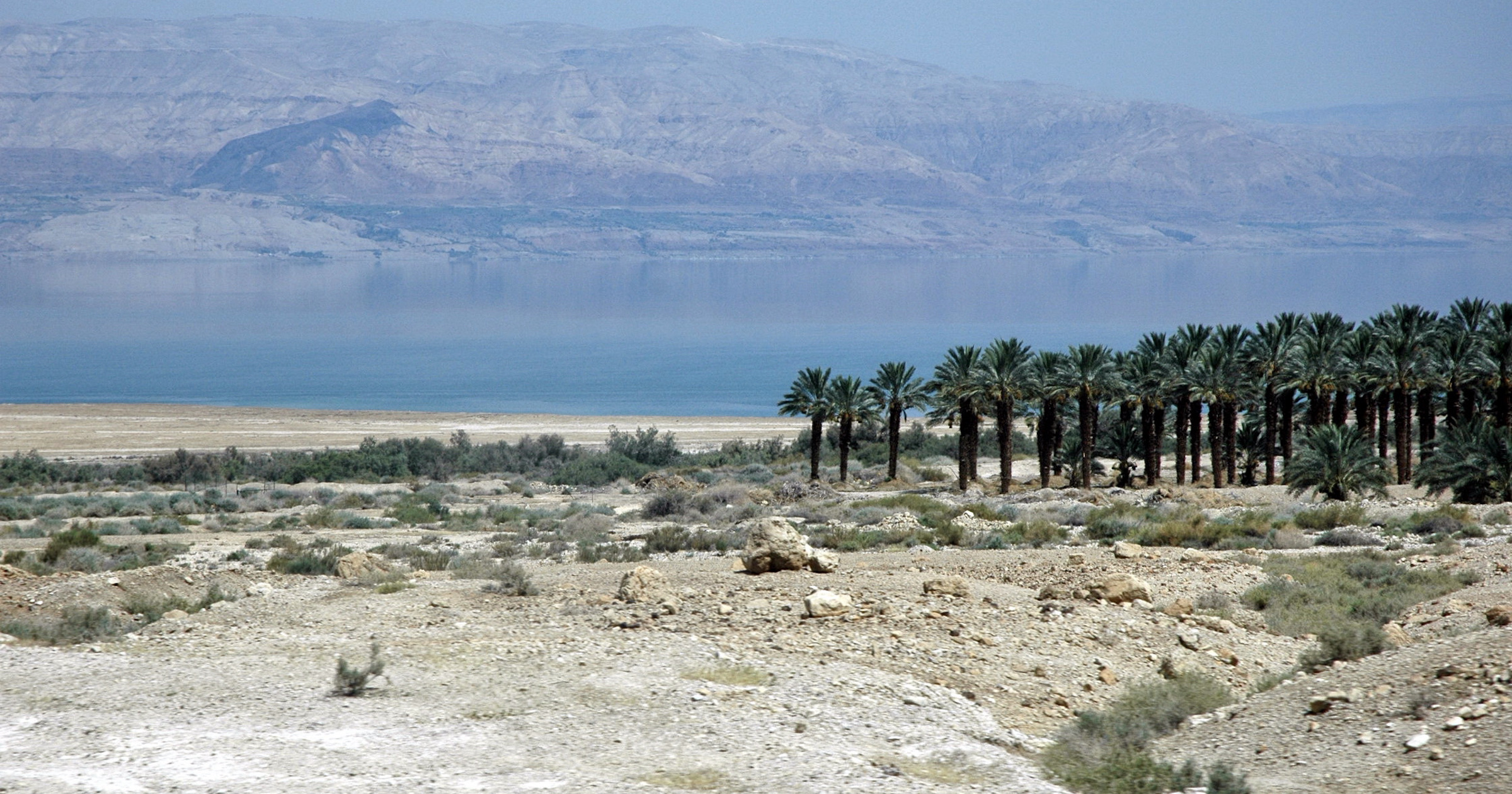 Life Sciences
Life Sciences
Resurrection Genomics: Millennia-Old Palm Trees Live Again

Seeds are packages of life, equipped to disperse and sprout in new environments. Protected by a durable coat, they contain the complete genome of the species along with an endosperm of nutrition for the first day of emergence into the light. As could be expected, seeds cannot last forever. Temperature changes, humidity, ionizing radiation from cosmic rays and underground radionuclides, attacks by other organisms, and various mutagenic factors will take their toll.
Readers may have unused seed packets from years gone by; they might want to try an interesting experiment to see if they can still sprout. It would be hard to beat the longevity of seeds of some date palms from the Judean desert. Seeds dating from 1,800 to 2,200 years old have sprouted and grown into healthy palm trees. They not only grew, but still maintain their ability to make new seeds that sprout. It’s like these seeds have awakened from a Rip Van Winkle sleep or have risen from the dead.
In February 2020, Sarah Sallon of the Hadassah Medical Organization in Jerusalem with eight other international researchers published in the AAAS open-access journal Science Advances about this amazing phenomenon. In their paper, “Origins and insights into the historic Judean date palm based on genetic analysis of germinated ancient seeds and morphometric studies,” they describe how they gave the trees pet names based on Biblical characters:
Of the hundreds of ancient date seeds and other botanical material recovered from excavations carried out in the Judean desert between 1963 and 1991 (fig. S1), 32 well-preserved date seeds from the archaeological sites of Masada, Qumran, Wadi Makukh, and Wadi Kelt were planted in a quarantine site at Kibbutz Ketura (table S1). Of these, six ancient seeds germinated and were further identified by the following monikers: Masada: “Adam”; Qumran: “Jonah,” “Uriel,” “Boaz,” and “Judith”; and Wadi Makukh: “Hannah” (Figs. 1 and 2). [Emphasis added.]
A Seed from Masada
The team’s first success occurred in 2008. A seed from Masada, radiocarbon dated at 1,900 years old, germinated and grew. In the 2020 report, they got six more seeds to sprout and grow. Think of the possibilities of learning about ancient civilizations from the genomes of trees long extinct!
This study, which confirms the long-term survival of date palm seeds, provides a unique opportunity to rediscover the origins of a historic date palm population that existed in Judea 2000 years ago. The characteristics of the Judean date palm may shed light on aspects of ancient cultivation that contributed to the quality of its fruit and is thus of potential relevance to the agronomic improvement of modern dates.
Ancient dates were favored for their size and sweetness. Now, Sallon and six other colleagues have published additional results in PNAS, discussing “The genomes of ancient date palms germinated from 2,000 y old seeds.” Focusing on what they can learn about date palm agriculture from two millennia ago, they introduce the term “resurrection genomics.”
Resurrection genomics is an alternative to ancient DNA approaches in studying the genetics and evolution of past and possibly extinct populations. By reviving biological material such as germinating ancient seeds from archaeological and paleontological sites, or historical collections, one can study genomes of lost populations. We applied this approach by sequencing the genomes of seven Judean date palms (Phoenix dactylifera) that were germinated from ∼2,000 y old seeds recovered in the Southern Levant. Using this genomic data, we were able to document that introgressive hybridization of the wild Cretan palm Phoenix theophrasti into date palms had occurred in the Eastern Mediterranean by ∼2,200 y ago and examine the evolution of date palm populations in this pivotal region two millennia ago.
The “evolution” discussed in the paper is of no Darwinian consequence. To the extent it resulted from natural variation, it is microevolutionary. To the extent it was purposefully guided by farmers, it is “artificial selection” (intelligent design). The genomic differences they found are among interfertile species that have undergone hybridization and introgression. The team was able to use the genetic variations between these seven trees to trace sources of date palm genes from Crete, Judea and North Africa. From those data, they could infer some possibilities about what the ancient empires were doing before the seeds were stashed at Masada, Qumran and other hideouts.
Interestingly, the changing genetic clustering of our ancient samples over time coincides with transitions in imperial control in the region, from the eastern Neo-Babylonian (early seventh century BCE) and Persian Empires (539 to 331 BCE) to the later more western Hellenistic Roman Empire (331 BCE to 476 CE).
How to Make a Seed Last for 2,200 Years
The windows into history are fascinating. Of more interest to design proponents, though, is figuring out how these seeds could remain viable for so long.
Seed storage over long periods prior to germination is potentially associated with accumulation of DNA damage, including single and double strand breaks, along with increased levels of base loss and modification. Nevertheless, DNA repair mechanisms are active during germination, allowing seeds to remain viable. Modification of guanine to 8-oxoguanine is one of the most common DNA lesions, leading to G-to-T (and C-to-A) substitutions. To explore whether Judean date palm genomes are enriched in G-to-T/C-to-A substitutions compared to modern date palms, we compiled the singleton mutational profile for each accession. We found no difference in singleton SNP profiles between ancient germinated and modern date palms.… During seed storage, DNA strand breaks also occur as DNA damage, and their repair leads to short insertion/deletion (indel) mutations at the break junctions. Here, we did not observe an elevated number of short singleton indels in ancient samples compared to modern date palms….
In short, “Despite the prolonged age of the seed prior to their germination, they do not appear to have substantially increased mutation levels.” The remarkable preservation of the genomes inside these seeds demands explanation. The authors suggested some reasons:
- The unique environment around the Dead Sea
- Active genomic maintenance mechanisms
- Evolutionary adaptation
On that last possibility, they say, “it should be noted that longer seed lifespans are believed to have evolved as an adaptation to arid environments where seeds need to survive prolonged dry periods.” Believed… by whom? Are they presenting a scientific hypothesis, or resorting to a just-so story? Seeds needed to survive for long dry periods, so they “evolved” a way to do it.
Keeping the Machinery Running
Most interesting is the second explanation: active genomic maintenance. For days, weeks, years, centuries, and millennia, things were happening inside those seeds! In each cell, at the molecular level, machines were scrutinizing the DNA, identifying mutations and repairing them. For details on what a plant must do to ensure seed viability, see our article, “How a Dry Seed Can Live a Thousand Years.” For a list of six DNA repair mechanisms that operate inside our cells and in all organisms, see our article, “Contingency Planning in the Cell” under “DNA’s Repair Toolkit.” These repair mechanisms involve numerous enzymes working together to locate damage and repair it. Undoubtedly some of the enzymes had to be replaced over time with the aid of other machines that transcribe and translate the DNA.
From the fact that 2,200-year-old date palm seeds could resurrect, sprout, and grow into healthy trees in our day, one must conclude that these repair mechanisms must have remained in operation at some level for all that time inside those seeds. Otherwise, the merciless environment would have increased the entropy inside the cells, degrading the genetic information and rendering it useless. Once dead, the seeds’ DNA strands would break, the cells burst, and all would return to dust. It didn’t happen in these amazing seeds. Something had the foresight to equip them with ways to delay the entropy increase for thousands of years. If human engineers had created a system with moving parts — a computer, for instance — that could last that long, everyone would be celebrating the skill of the intelligent designer, even if they didn’t know who it was. We can respond that way in the case of the resurrected date palm seeds.
